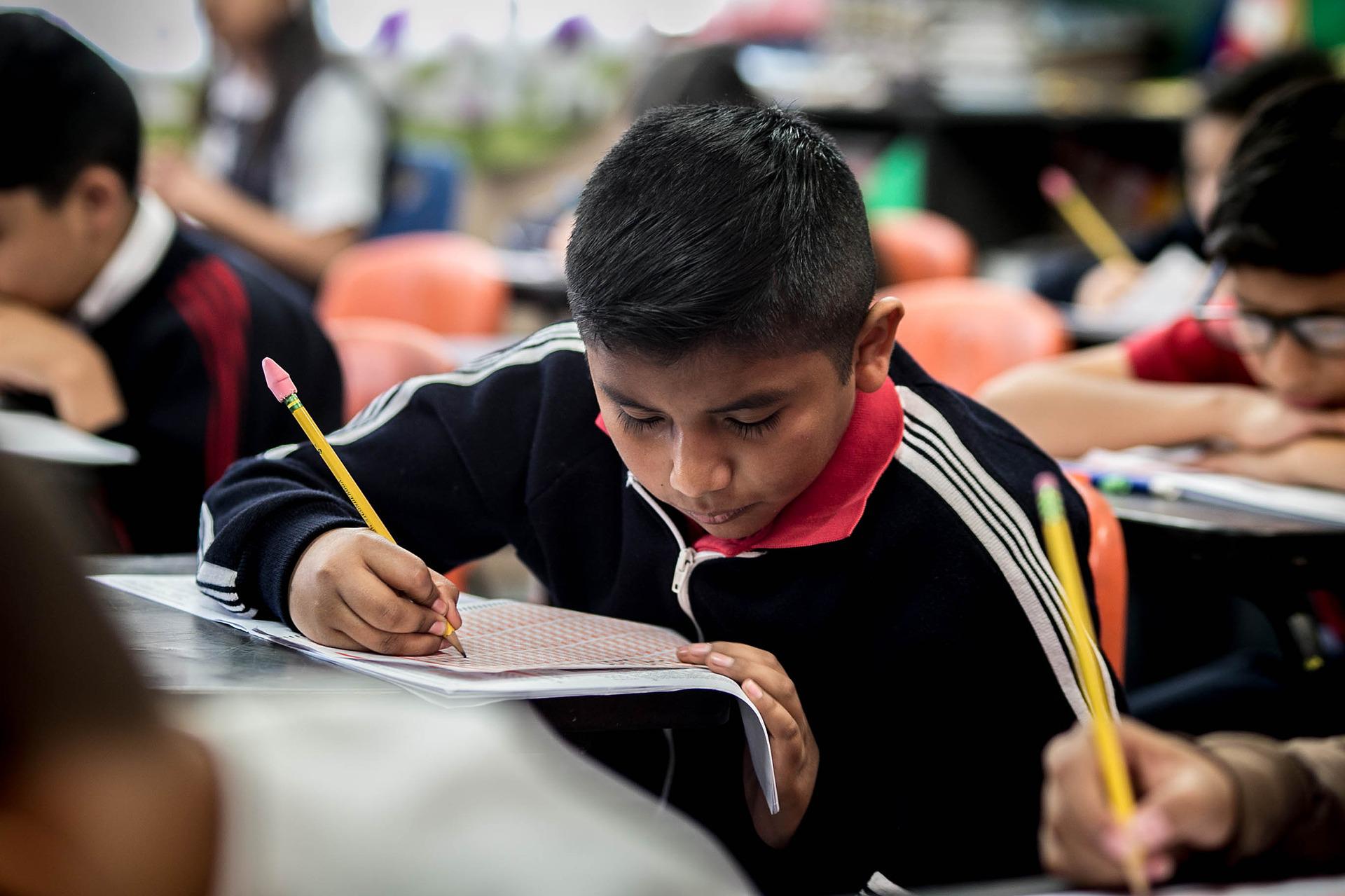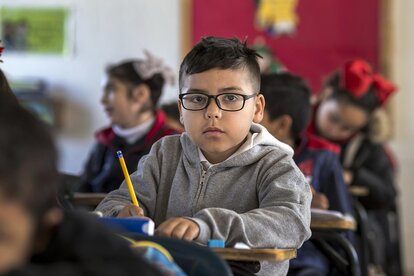Education
Latin American students' performance in PISA test and their international ranking

PISA tests as a decisive factor in identifying the quality of education systems
Since its first edition in 2000, the Organization for Economic Cooperation and Development (OECD) has taken on the task of measuring the learning of 15-year-old students in dozens of countries through periodic evaluations every three years, positioning the Programme for International Student Assessment (PISA) tests as a global thermometer of education. In this note we analyze the results of the latest 2018 edition and rehearse an assessment on the comparative performances of education systems. The Latin American countries that participated in PISA 2018 include Argentina, Brazil, Colombia, Costa Rica, Chile, Mexico, Panama, Peru, Dominican Republic, Uruguay and, for the first time, Panama and Dominican Republic.

Let's put the 2018 edition of the tests in context.
Approximately 600,000 students representing 32 million 15-year-olds from 79 countries and education systems around the world took part in this initiative. The main subject in the latest PISA assessment was reading, with mathematics, science, global competence and financial literacy included as secondary areas of assessment.
PISA is conducted every three years and aims to evaluate the ability of 15-year-old students to use their knowledge and skills to meet the challenges of globalized life. The test considers between six and seven levels of performance and points out that level 2 is the minimum adequate to cope in the contemporary world.
Asian countries take the top places
Asian countries once again took the top places. Singapore, China and Macao obtained the highest scores in the three areas of mathematics, reading and science. More than 85 % of students in these countries achieved a level 2 or higher in reading, being able to identify the main idea in a text of moderate length, find information based on explicit, though sometimes complex, criteria, and can reflect on the purpose and form of texts when explicitly instructed to do so. In addition, it was found that one in six of these students managed to obtain a level 6 in mathematics, which PISA considers to be the most complex.

How did Latin American students perform?
More than half of Latin American countries participated in PISA 2018, showing the region's strong commitment to measuring learning. If we go back to 2000, when PISA began, only five countries in the region participated in this assessment (Table 1). By 2018, this number had doubled and participating countries included Argentina, Brazil, Chile, Colombia, Costa Rica, Dominican Republic, Mexico, Panama, Peru and Uruguay.
Regarding the performance of Latin American students, ten Latin American countries participated in the 2018 PISA round and the main focus was on reading proficiency. Five of the ten Latin American countries have improved their reading scores, but the pace of growth is slowing. In addition, more than half of the young people still fail to achieve basic reading skills.
Chile, Colombia and Peru have improved their results since their first participations in PISA. Argentina and Uruguay have managed to improve their results in the last decade, but a long-term view shows that these improvements are only recent.

In contrast, Brazil, Mexico and Panama have not seen significant improvements since they began participating in PISA, although they have improved test coverage among 15-year-olds. Costa Rica and particularly the Dominican Republic have declined in performance since their first participation, although the decline for Costa Rica occurred between 2012 and 2015.
In reading, the main area of evaluation, Chile once again presents the best performance and is placed 43rd in the ranking, with results similar to those of Slovakia, Greece and Malta.
A few steps behind are Uruguay (48th), Costa Rica (49th), Mexico (53rd), Brazil (57th) and Colombia (58th). Argentina (63rd) and Peru (64th) are in the bottom 20 positions, with results similar to those of Albania and Qatar.
At the bottom of the ranking are Panama (71st) and the Dominican Republic (76th), together with Indonesia, Morocco, Lebanon, Kosovo and the Philippines.
The evolution over time shows a clear and constant upward curve in the case of Peru, improvements between 2000 and 2009 in Chile and Brazil, and regular ups and downs in the other participating countries since 2000: Uruguay, Mexico, Colombia and Argentina. In none of these four does there appear to be a trend of improvement or worsening.

Final thoughts
The results show, in the first place, a still very marked distance between Latin American countries and those of the OECD, which represent the most developed countries in the world. This gap is also reflected in the socioeconomic context of students, which PISA measures with GDP per capita and investment per student. In other words, contextual variables appear to be decisive in understanding student learning outcomes. This does not necessarily mean that education can partially reverse the social context of a student, a school or a country, but it does indicate that we must be very careful to pay attention to what we are really comparing. It is important to point out that if what we want to understand is the performance of schools, then the PISA 'ranking' tells us very little, because a country's results are conditioned by the socioeconomic context that is beyond the intervention possibilities of schools.
However, these results should not be used to stigmatize education systems facing challenges. Instead, they should be used to understand the magnitude of the learning crisis and advocate for better learning for all. Measuring learning is certainly the foundation for advocating for and improving learning outcomes. What you cannot measure, you cannot improve. And, in this regard, Latin America is certainly heading in the right direction. Improving learning will also require aligning Latin America's education systems to this goal, including ensuring that the conditions for (equitable) learning are met.
As a final conclusion, PISA is a test that has some problems: it takes education systems out of context, creating rankings that confuse more than they contribute; it does not correct its methodological limitations, promotes mistaken analyses and has dangerous curricular biases. What PISA measures is a part of the educational systems: it is both an age and a curricular cut. We know nothing about what students learn in history, the arts, physical education or citizenship. But just as we point out these limitations, we must highlight the benefits of the PISA test. First, it is a test that is competency-based in design; that is, it measures what students are able to do with knowledge. It is not so much about measuring their short-term memory, but rather their transferability: how to use what they have learned in new situations. This is extremely valuable, because it allows us to understand the deep dimensions of learning, even with the limitations of any standardized test.
Oswaldo Molina, senior researcher at the network of Studies for Development - REDES, writes in his column in the newspaper El Comercio about the situation of teachers and Peruvian education in general and remarks that “having better trained and productive teachers contributes up to 5.1% of the students' grades”. A revealing fact is that before the pandemic, 50% of 10-year-olds in Latin America could not read and understand a simple story. Today, the figure is close to 80%. We are facing a real learning crisis.
Today, the reflections of Angel Gurría, Secretary General of the OECD, on the trend of reading comprehension problems are gaining strength: “Without adequate education, young people will languish on the margins of society, unable to face the challenges of the future labor market, and inequality will continue to increase”.